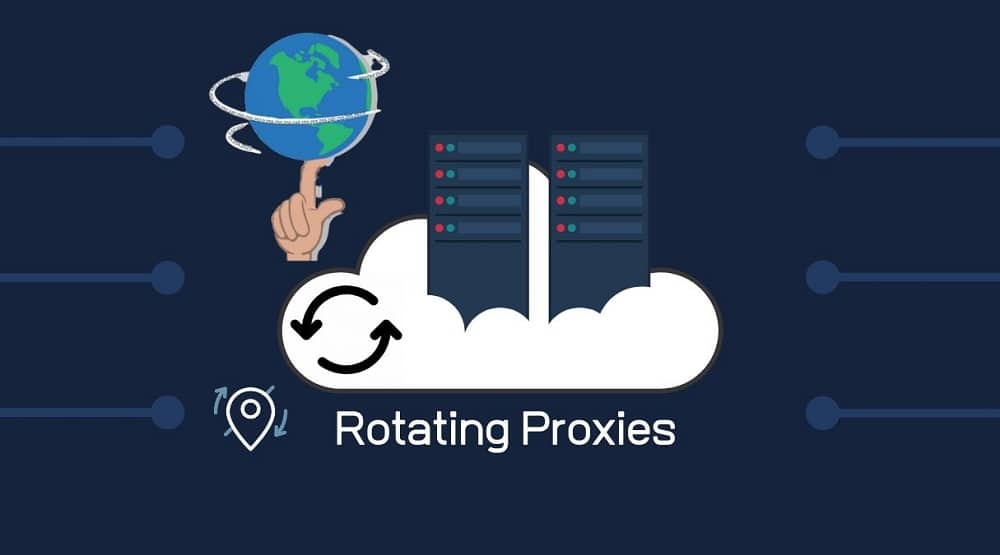The Ultimate Guide to Rotating Proxies vs. Static Proxies
 Christina Paul
Christina Paul
Rotating proxies are a great way to keep your website content fresh and up-to-date. They allow you to assign a different proxy for each day of the week so that your site always looks current and reflects the latest trends. Static proxies, on the other hand, are less flexible and more static. This means that they will display the same content regardless of what day it is or what time of year it is. Which proxy should you use? That depends on your needs. If you want to make sure your site always looks fresh and up-to-date, rotating proxies are the way to go. If you just want to keep your site running without too much hassle, then a static proxy may be better for you.
What is a Proxy and Why Would I Use One?
A proxy is a computer system that acts as an intermediary between two or more networks. It allows one network user to access resources on another network without exposing their own personal IP address.
Proxy servers are often used for privacy and security reasons. For example, a proxy can be used to bypass web filters at work or school. Additionally, proxies can be useful for streaming content from restricted countries or regions.
Static proxies do not change their addresses automatically. This can result in increased latency when connecting to the proxy from different locations. Rotating proxies automatically switch addresses every few minutes to keep the traffic load balanced across all of its nodes. This reduces latency but requires that you maintain up-to-date information about the proxy's nodes.
Pros and Cons of Rotating Proxies
There are pros and cons to rotating proxies, but the decision ultimately comes down to your needs and preferences. Click here to know about some of the benefits and drawbacks of rotating proxies:
Benefits of Rotating Proxies 1. Increased Security: Rotating proxies help keep your online activities more secure by changing your IP address every time you connect to a website. This tactic also helps prevent tracking and spying on your browsing history.
2. Greater Flexibility: You can rotate proxy servers as needed, which gives you more flexibility when accessing the internet. For example, if you’re traveling and need to stay connected while overseas, rotating proxies can help make this possible. Plus, rotating proxies can be useful if you have multiple devices that need to access the internet from different locations (for work or pleasure).
3. Increased Speed: When using a rotating proxy server, your connection will generally be faster because all traffic is routed through one proxy instead of several individual ones. Additionally, many modern browsers now support simultaneous connections through different proxies, so you can take advantage of this feature without having to change settings on each device.
Drawbacks of Rotating Proxies
1. Reduced Comfort: If you frequently switch between devices or locations where wi-fi is available, rotating proxies may not be as comfortable as using a static proxy. In fact, some users report that their overall connection speed decreased when they switched to a rotating proxy server instead of a static one.
Static Proxies: What Are They, and When Should I Use Them?
Static proxies are used when you want to connect to a website from a different location, but don’t need the website to change its IP address. They work by caching the same content for multiple users. When you request a page from the proxy, the proxy looks up the page on its own server and sends you the request instead of forwarding your request to the website. This can speed up your connection because the proxy doesn’t have to communicate with the website every time you visit it.
When should you rotate proxies?
When rotating proxies, it is important to take into account the following factors:
1. Type of content requested Some websites require a certain type of proxy, such as a HTTP proxy for displaying images, while other websites may only accept a SOCKS5 proxy. It is important to test your request before rotating proxies in order to ensure that you are using the appropriate one.
2. Load time Different websites will have different load times due to their size and complexity. When rotating proxies, it is important to take this into account in order to minimize the number of requests made by the browser and thus improve performance.
3. Proxy location and speed Not all proxies are created equal when it comes to speed and location. Some may be faster or more readily available in specific countries or regions, so it is important to research which ones will work best for your needs before rotating them.
When should you static proxies?
There is no right answer to this question as it largely depends on your needs and the production environment you are working in. However, there are some general tips to follow when deciding whether or not to use static proxies:
If you have a small number of servers and only need to forward traffic from specific addresses or ports, a static proxy can be an economical solution.
If your organization has a limited IT budget, rotating proxies can be advantageous as they require less maintenance overall.
When using static proxies, it's important to make sure that the correct version of the appropriate software is installed and running on the proxy servers. Otherwise, your traffic may not be routed correctly.
Conclusion
If you're like most webmasters, you've probably been using the same set of proxy servers for years. But is that really the best way to go about things? The reality is that your website's performance can be significantly improved by rotating your proxies every few months or even weeks. In this guide, we'll outline the benefits of rotating proxies and show you how to do it on both a personal and a corporate level. Don't wait any longer – start experimenting with different proxy server combinations today and see what makes your site run faster!
Subscribe to my newsletter
Read articles from Christina Paul directly inside your inbox. Subscribe to the newsletter, and don't miss out.
Written by
